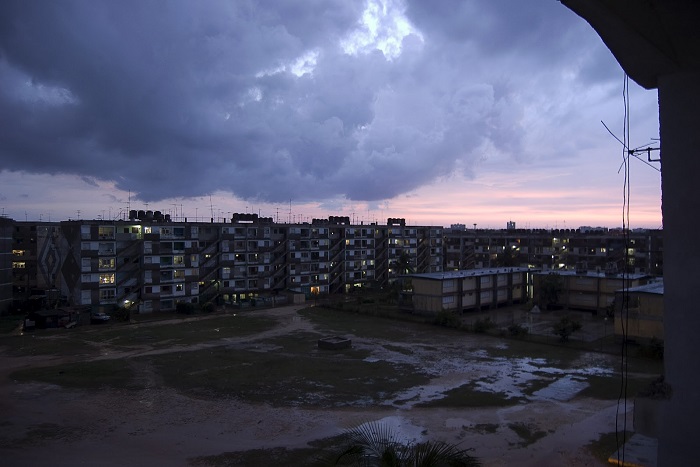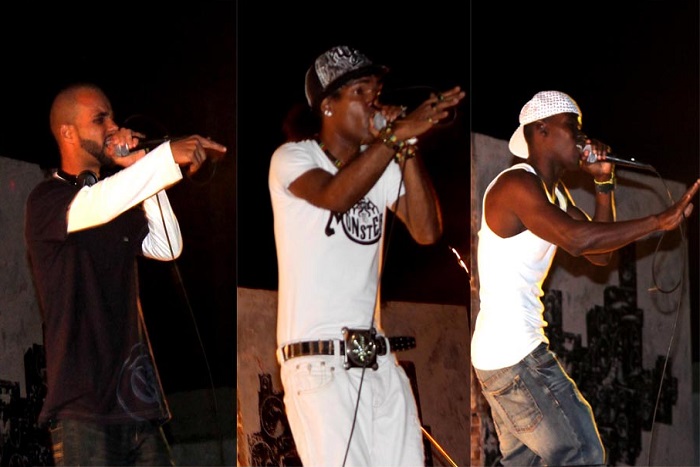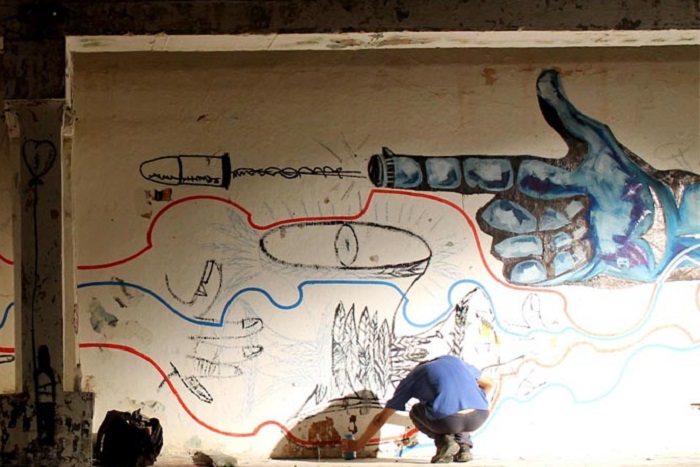The Havana Times, that ever reliable information source on Cuba, alerted me on the holding of the Alamar Winter Rap Festival. Initially organized in 1995 as an underground music festival by Cubans who were influenced by the rap and hip-hop movement in the United States in the backdrop of the hardship of the so-called Periodo Especial, it has since become an officially-sanctioned event under the Cuban Ministry of Culture.
Fidel Castro initially deemed rap music as contrarrevolucionario. The government later did an about face and recognized rap as a form of expression of Cuban art. For poor and disaffected youth living in ghettos like Alamar, rap music has become a means for them not only to express themselves in a tightly controlled society, it has also become a means for them to get out of the ghetto to a rewarding musical career, following in the footsteps of successful festival alumni such as the Orishas (now signed by a French label) and the notorious Cuban indie rap legends Los Aldeanos.
Alamar’s gritty atmosphere was a catalyst to the development of the Cuban rap movement just as the hardship in the black ghettoes in the United States helped inspire the original rap movement. The Havana suburb is reminiscent of the hideous Soviet-style cinderblocks of the old Warsaw Pact countries. Mainly inhabited by Afro-Cubans, the community invokes fear and trepidation among Habaneros. Notorious for its poverty and petty crime, it was the perfect incubator for the development of the Cuban rap movement.
The seaside suburb of Alamar (hence the name, which means by the sea in Spanish) is isolated from the city and therefore is difficult to reach. Public buses ply the Alamar-Havana route, but they are intermittent. That was my main concern. How am I to get back to Havana knowing that the event would end well after midnight. I wasn’t really bothered by the negative reputation of the place. Despite the apprehensions of my colleagues who tried to dissuade me from going, I went anyway, telling them I had nothing more to lose, having just lost my wallet .

Per government sources, the event was supposed to open at Alamar’s anfiteatro at 8:30 p.m. on 24 February 2012. I negotiated with a taxi driver to drop me off at the venue. The amphitheater was surprisingly quiet and empty when I arrived. I asked around and was told that the concert was actually going to start an hour later. I should have known better. Cuban time is never set in stone – always flexible and most definitely never on time.
Alamar at night is dark and menacing. Groups of youths loiter outside of the cinderblocks, wiling away the time, smoking or drinking. That night, I was the only yuma (foreigner) walking its streets. I decided to roam its streets to get a firsthand view of the infamous community. It certainly had a much different feel than what I was accustomed to in Miramar or Vedado. Truth be told, I felt strangely comfortable and safe. I have been in much worse places, including in my own country. People were just minding their own business, generally leaving me alone.
When I returned to the amphitheater at 9:30 p.m., the place had somewhat filled up, but the program hadn’t started yet. While rap concerts in other countries would be normally dominated by the younger set, it was surprisingly a family affair in Alamar. Groups of teenagers were joined by baby-toting mothers and clusters of retirees. People were sharing their bottles of aguardiente (home-distilled rum) with each other. The police were present, but they were staying out of the crowd’s way. A bunch of graffiti artists were doing their thing, scrawling drawings on the amphitheater’s walls. The boom box was blaring with Jamaican rap-reggae, singing about, of all things, the merits of smoking marijuana.
At about 10:00 p.m., the party started. The music and acts that night were surprisingly good despite the poor audio, the malfunctioning microphones, the disappearing emcees, and the fact that the audio technician could never once get the correct CD inserted for each act. Weirdly-named artists such as, among others, Route 11, Albany, Papagoza, D’Sur, Duty Flow, Chamaco, Causa y Efecto, Salamulekum, Java Atrevida and MC Intentiones, presented their diverse skill sets and performed variety of genres from gangsta to R & B and rap metal.

The influence of American rap was evident, but, all in all, the vibe and flavor were distinctly Cuban. Easily the most amusing act that night was the yellow-colored raincoat-wearing and pot-wielding duo (as in cooking pots, not the other kind of pot), whose music and rap delivery eerily resembled that of the Beastie Boys. Another duo mightily tried to sample their version of rap metal to a bewildered audience. It appears that the crowd was already familiar with the lyrics of some of their songs. A number of the songs got the crowd on their feet, including Route 11’s Debe Ser Independiente, which was not just informative but a crowd-pleaser as well.
But the highlight of the night belongs to rap collective called La Alianza/D’Sur. At first, the music technician could not get the correct CD plugged in, resulting in about ten minutes of awkward and expletive-ridden freestyle rapping mostly directed at the fumbling technician (No es mío cabrón. Mírame, mi cara está en frente del disco!). It was all bedlam however after the group started the set. Their music reminded me a lot of gangsta rap pioneers NWA as they were rapping about the same things – police brutality, jail experiences, and the prejudice of police against Black people. They were actually screaming “Fuck the Police!” in the English language.
The crowd joined them by thrusting their middle fingers upwards, directed at the police, who were conveniently situated outside, while screaming: Yo no soy delinquente, coño!, and Fuck the Police!, in English. (Black or mulatto Cubans understand the kind of bias and prejudice they face from the police who have the habit of stopping Cubans of darker skin color to check on their identities and criminal records even if they were simply walking around). I saw the aghast faces of official government minders, who were there to look after the concert (noticeable by their hanging ID cards), taking nervous notes of what was unfolding. Those brave raperros are going to be toast.

The group’s freestyle number, entitled Debate entre Monedas, during which they rapped about the different currencies used in Cuba, was priceless. It proved that these guys have depth and are just as adept at discussing socio-economic issues. The crowd internalized the experience of having to earn in Modena Nacional, but forced to buy in Cuban convertible, 24 times the value of the former. They even inserted a dig at the Venezuelan currency, Bolivar, which they call as otra mierda.
I have got to give it to those guys. They had the guts to openly express their grievances through their art. It was obvious that no other artist that night would be able to top off their performance. It turned out that La Alianza’s performance that night would later affect the conduct of the rest of the festival.
In the second round of performances the next day, La Alianza was no longer included among the performers. I also noticed that the performers were heavily vetted by concert organizers. Before the start of the concert, the performers were rounded up by the organizers and were told to behave. The performers still displayed good rapping skills, but their song choices noticeably steered away from controversial social issues. Overall, the second night was relatively tame compared to the previous night.
The crowd felt it too. They were more restrained. Lamentably, censorship prevailed on the second night. Rap is, by nature, not set by rules. It represents defiance from convention. When raperros submit themselves to self-censorship, their creativity suffers. Historically, the Afro-Cubans mostly involved in the rap scene were vocally unhappy with the regime. When the Cuban government created the Cuban Rap Agency under the Ministry of Culture, the formerly underground scene went mainstream. It has since lost its rebellious identity. Still, the Alamar Winter Rap Festival is an oasis of badassery in totalitarian Cuba.